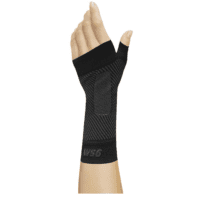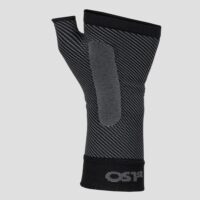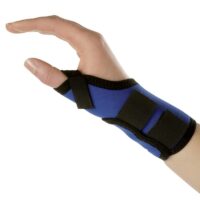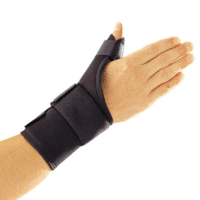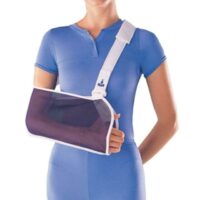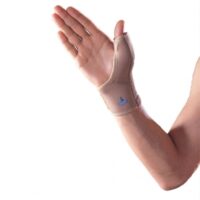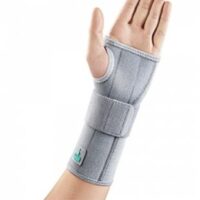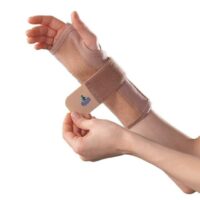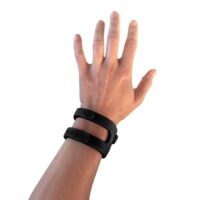Sprained Thumb
Article by John Miller

Sprained Thumbs: A Physiotherapist’s Guide
What is a Sprained Thumb?
A sprained thumb occurs when the ligaments in the thumb’s metacarpophalangeal joint suffer damage. This typically happens when the thumb bends beyond its normal range, often backwards. It’s a common injury in sports like skiing, basketball, and netball.
Symptoms
If you’ve sprained your thumb, you’ll likely experience:
- Pain when bending the thumb backwards.
- Pain in the thumb’s web area during movement.
- Swelling over the bottom joint of the thumb.
- Joint laxity and instability. Severe cases, with significant laxity, might indicate a total ligament rupture, necessitating surgical intervention.
Healing Time and Treatment
Recovery time varies, but most athletes return to sport in 4 to 6 weeks, depending on the injury’s severity. Accurate diagnosis and appropriate treatment are crucial. Consulting a physiotherapist ensures a tailored recovery plan, including strengthening exercises to restore stability and prevent future injuries. Neglecting proper care could lead to re-injury or chronic instability, potentially requiring surgery.

What is Skier’s Thumb?
Skier’s Thumb, a common injury among skiers, occurs when the ulnar collateral ligament of the thumb is injured. This ligament is crucial for the stability and function of the thumb’s joint. The injury often happens when a skier falls with an outstretched hand while holding a ski pole, causing the thumb to be bent in an unnatural way.
Symptoms and Diagnosis
The main symptoms of Skier’s Thumb include:
- Pain at the base of the thumb in the web space between the thumb and index finger.
- Swelling and bruising around the thumb area.
- Difficulty or pain when gripping or pinching objects.
A physiotherapist or doctor will typically diagnose the condition through physical examination and may recommend imaging tests, such as an X-ray or MRI, to assess the extent of the injury.
Treatment and Recovery
Immediate treatment involves R.I.C.E (rest, ice, compression, and elevation) to reduce pain and swelling. A physiotherapist will guide you through a rehabilitation program tailored to restore thumb function and strength. This program may include:
- Exercises to improve range of motion and strength.
- Splinting or bracing to protect the thumb during healing.
- Techniques to reduce pain and swelling, such as ultrasound or electrical stimulation.
In severe cases, where the ligament is completely torn, surgical intervention may be necessary. Post-surgery, physiotherapy plays a vital role in recovery and preventing future injuries.
Prevention Tips
To prevent Skier’s Thumb:
- Use proper ski pole techniques.
- Consider wearing protective gear, like thumb stabilisers or wrist guards.
- Engage in thumb-strengthening exercises as part of your regular fitness routine, especially if you’re an avid skier.
Remember, consulting a physiotherapist for personalised advice and treatment is crucial for a complete recovery.
Seeking Professional Advice
If you suspect a sprained thumb, it’s vital to consult a physiotherapist. They can provide a comprehensive treatment plan, including manual therapy, exercises, and advice on activity modification during recovery.
Conclusion
A sprained thumb, though common, requires careful attention and professional guidance for effective healing. Timely intervention and adherence to a physiotherapist’s advice are key to a speedy and complete recovery.
What to Do?
If you’re experiencing symptoms of a sprained thumb, don’t delay in seeking professional advice. Contact your physiotherapist for a proper diagnosis and tailored treatment plan.
Please consult a trusted hand therapist or doctor.
Related Articles
- Sprained Finger Treatment – Physiotherapy Guide – While this article focuses on sprained fingers, it includes useful information about general hand and wrist pain treatments, which could be relevant for those also dealing with sprained thumbs. It discusses various treatment options and supportive measures.
- Common Causes of Wrist & Hand Pain – This piece explores various causes of wrist and hand pain, including injuries like thumb and finger sprains. It might provide valuable context for readers understanding how a sprained thumb fits into broader wrist and hand health issues.
- Ligament Tear – This article discusses various ligament injuries, including those in the wrist and hand that can lead to thumb and finger sprains. It’s a great resource for understanding the broader category of ligament injuries and their implications.
- De Quervain’s Tenosynovitis – De Quervain’s Tenosynovitis is a painful condition affecting the tendons on the thumb side of your wrist. It’s often caused by repetitive hand or wrist movements, leading to inflammation of the tendons and their sheaths.



